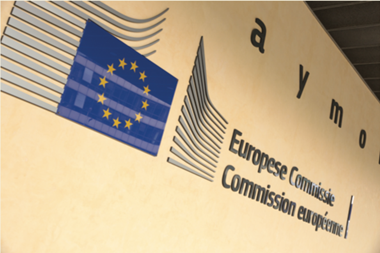The technical expert group (TEG) advising the European Commission on sustainable finance has today published its final recommendations on the EU taxonomy, including “substantial new user guidance” to help investors and companies meet obligations for reporting against the framework.
The taxonomy is a list of economic activities and corresponding performance criteria consistent with the EU’s commitment to reach net-zero carbon emissions by 2050.
According to the TEG, it provides companies and investors with “the clearest picture yet … of an economy that can fulfil Europe’s climate goals”.
“Transitioning to a climate-neutral economy by 2050 requires clear tools and guidance, reflecting scientific evidence and market experience, to give confidence to companies and investors to act,” it said.
Sean Kidney, CEO of Climate Bonds and a member of the TEG, said: “The EU taxonomy opens up huge opportunities for institutional investors to support low carbon and green growth, transition activities and decarbonisation.”
“Today’s announcement will positively shape investor decision making and corporate planning in multiple regions through the 2020s,” he predicted.
“Today’s announcement will positively shape investor decision making and corporate planning in multiple regions through the 2020s”
Sean Kidney, CEO of Climate Bonds and a member of the TEG
Today’s publications – a report with the TEG’s final recommendations plus a technical annex – reflect changes to the taxonomy regulation as per the version that was politically agreed by the co-legislators on 18 December.
One of the changes, for example, was that companies subject to disclosure requirements under the Non-Financial Reporting Directive (NFRD) would have to make disclosures with reference to the taxonomy.
In addition to including guidance “on how users of the taxonomy can develop taxonomy disclosures,” the final taxonomy reports differ from their predecessors in that the TEG has added criteria for climate adaptation for 68 economic activities; revised criteria for buildings, forestry and manufacturing; and added “Do No Significant Harm” criteria for the climate change mitigation objective.
Disclosure notes
The final taxonomy regulation creates disclosure obligations for financial market participants such as asset managers and pension funds, and companies, although the TEG notes that the taxonomy “will have many applications beyond these”.
Among a myriad of points made about companies’ reporting obligations under the taxonomy regulation, the TEG writes that non-financial companies reporting on the taxonomy-alignment of their turnover and capital or operating expenditure, as required under the final regulation, will be providing valuable information for investors.
“Turnover gives a clear picture of where a company currently is relative to the taxonomy,” the report states.
“It allows investors to report the % of their fund invested in taxonomy-aligned activities. Capex, in contrast, gives investors a very good sense of a company’s direction of travel. It is a key variable for assessing the credibility of a company’s strategy, and it helps investors decide whether they agree with their strategic approach.
“Companies that disclose their capex investments in economic activities as part of a plan to be taxonomy-aligned provide invaluable information for constructing green portfolios, and for analysing companies’ transition plans and/or environmental sustainability performance and strategies.”
The TEG’s report also notes that the taxonomy regulation does not require companies to disclose the proportion of taxonomy activities that are categorised as either “transition” or “enabling” activities, but that investors are expected to provide a breakdown including these categories and that the TEG, therefore, recommended that company disclosure obligations under the NFRD be “clarified” with this mismatch in mind.
The Commission launched a consultation on the review of the NFRD last month, with a deadline for responses of 14 May.
The TEG’s final report also covers the taxonomy disclosure requirements for financial market participants, which form part of a broader sustainability-related disclosure regime laid out in a separate regulation – “regulation on sustainability-related disclosures in the financial services sector”.
“The timeline presents challenges to implementation, as corporate disclosures may not be available for financial market participants to use in their 2021 disclosures”
Technical Expert Group, EU taxonomy final report
It noted a timeline that it said “presents challenges to implementation, as corporate disclosures may not be available for financial market participants to use in their 2021 disclosures”.
As set out by the TEG, the timeline in question is: financial market participants will be required to complete their first set of disclosures against the taxonomy, covering activities that substantially contribute to climate change mitigation and/or adaptation, by the end of December 2021; companies will be required to disclose in the course of 2022; technical screening criteria will be issued as part of the explicit legal requirements from the Commission by the end of 2020.
In a section on “dealing with limited data”, the TEG states that it “acknowledges the hurdles involved in assessing compliance” where full disclosure is not made, such as in the case of non-EU companies, and that in these cases investors are recommended a “five-step approach,” which it sets out.
Helena Viñes Fiestas, global head of stewardship and policy at BNP Paribas Asset Management and a member of the TEG, said: “For asset managers such as ourselves, the taxonomy will become an invaluable tool to help us construct our green portfolios and engage with companies.
“It also enables consistent reporting on the percentage of each fund that can be considered sustainable, facilitating ‘apples to apples’ comparisons for end investors.”
Next steps
It is now up to the Commission to develop the legal instruments to bring the taxonomy criteria into legal effect, with delegated acts containing technical screening criteria to be developed in two phases.
The first technical screening criteria, for activities that substantially contribute to climate change mitigation or adaptation, will be adopted by the end of 2020 and enter into application by the end of 2021.
A second set of technical screening criteria, covering economic activities substantially contributing to a further four environmental objectives, will be adopted by end 2021 and enter into application by end 2022.
In addition, according to the TEG, by the begining of June 2021 the Commission will adopt a delegated act specifying how corporate disclosure obligations should be applied in practice.
The EU has indicated it plans to include further economic activities in the taxonomy in the future via a yet-to-be-estalished Platform on Sustainable Finance that is expected to be operating by the end of 2020.
The TEG today also published a guide for financial market participants on using the EU green bond standard that it has proposed. The Commission is due to explore the possibility of a legislative initiative for such a standard in the context of the public consultation on the renewed sustainable finance strategy, taking place from March to May this year.
Valdis Dombrovskis, executive vice-president “for an economy that works for people” at the European Commission, said: “These reports by the TEG are welcome as they provide excellent input for us to develop our final standards on climate change mitigation and climate change adaptation.
“They will also help us establish EU green bond standards as part of broader measures to spur the take-up of sustainable finance in Europe.”
Publication of the TEG’s final reports comes shortly after think tank Preventable Surprises called for a new approach to the net-zero emission strategies that companies, investors and governments were increasingly committing to, saying that “science and experience now show it won’t be enough to meet the Paris climate agreement”.












